Barren Planet Surface
Model of Surface of a rocky Planet (without atmosphere) using Plaster of Paris
We are going to make terrestrial planetary surface model using Plaster of Paris (or POP). It is a white powder that, when mixed with water to form a paste, will turn hard in a few minutes. POP is made by heating gypsum, a mineral composed of calcium sulfate and water.
For this project we used quick setting POP available in the hardware shops. Cost of 5 k.g. POP is about Rs 50/- (less than 1 USD). (A) in the picture.
We make the model of the surface of terrestrial planet in a cardboard box tray of 20 x 20 x 5 cm. Normally 8 inch pizza comes in a box of this size. We need only one side of the box. (B)
For a box of this size we used a thermocol cup, (C), as standard measure. Two full measures of POP (D) is taken on a sheet of paper. And Three measures of plain water in a big broad pan (E).

We now mix POP from (D) into water in (E). This operation has to be carried out quickly. To make smooth paste, while mixing POP to the water one needs to keep stirring the mixture and avoid formation of lumps. Now pour the mixture in the tray (A). It is OK to have a few bubbles in the mixture. These will be the craters.
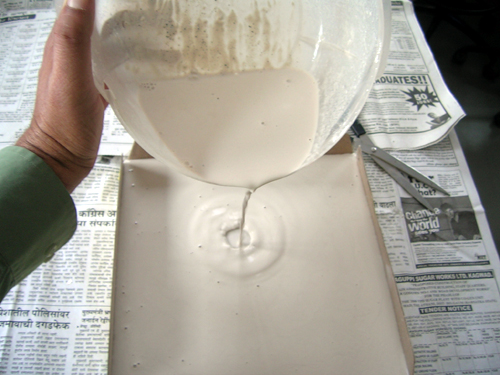
To make more craters sprinkle or spray water with your fingers on this still unset mould. You may also drop a few larger droplets.

We are now almost done. Allow it to dry. It would help to spray a little amount of water to slow down drying. This will avoid formation of cracks. After the surface has dried completely take it out of the cardboard box. It will be about one centimeter thick.
Here are a few close ups.
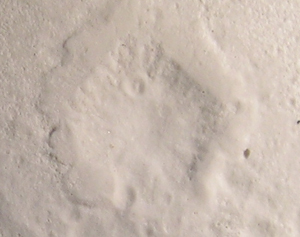

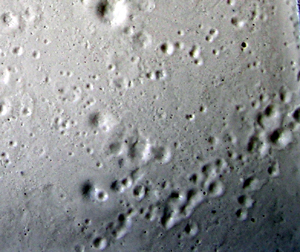
You may add a bit of red or brown colour or rouge to POP.
And nevermind if your mixture becomes too lumpy. Here is what you can do --
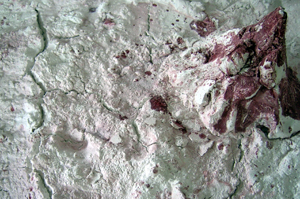
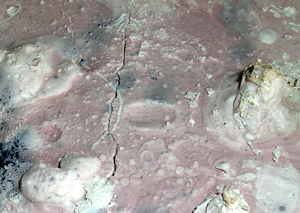
-- make some mountains using the lumps and let the surface dry unevenly generating cracks and valleys.
What more
- try making bigger surfaces.
- try making loose slurry with more water and drop a steel ball for a
height, say from 1 meter.
Can you work out the relation between the size of the crater and 'impact velocity' of the ball.?
Answer these :
- Why are the surfaces of Moon and Mercury are heavily cratered compared to
the Earth, Venus and Mars?
- Looking that the surfaces can you figure out which feature or craters
came earlier and which later?
Send us your design (s) - we would be happy to share it with others
 The material here can be used freely. It is however expected that the source will be acknowledged.
The material here can be used freely. It is however expected that the source will be acknowledged.